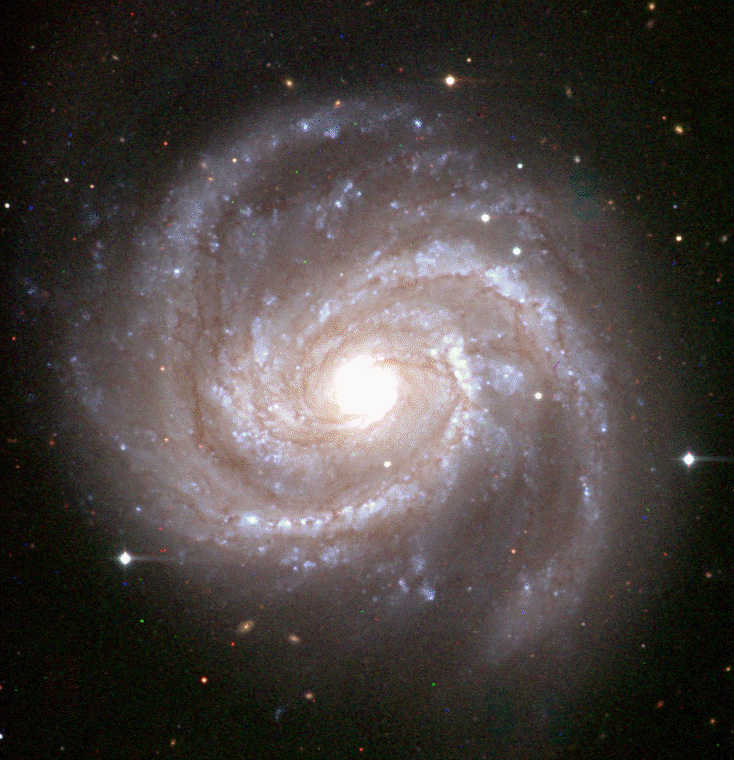
M100 (NGC 4321), a barred galaxy in the Virgo cluster
There’s a really simple reason why the Royal Greenwich Observatory moved their telescopes here. It’s one of the three best places in the world for astronomy.
A modern telescope could see the equivalent of a candle on the moon, so obviously they want to be well away from city lights. Even more obviously, they want to be somewhere that doesn’t get many cloudy nights.
Much less obviously, they want to be somewhere the stars don’t twinkle. This happens when the air’s turbulent. It’s pretty, but it really messes up your view.
There are three places in the world which are great on all three counts, and La Palma is one of them. (The other two are the peak of Mauna Kea, Hawaii, and the Atacama Desert in Chile.)
The problem is to keep it that way.
When the observatory moved here, they asked for, and got, an agreement to limit things like street lights. Los Llanos has a street with lamps which remind me of 1950’s hairdryers – the sort that go all around your head.
Recently the island government committed to spending over a million euros to update the streetlights to reduce the light pollution even further.
The result of all this is that La Palma is a great place for amateur astronomers, too. Even in a resort, people notice how many more stars you see here, compared to almost any English town or city. Here‘s another picture, this time of M51, taken by my friends in Franceses with an 80mm amateur telescope on their first night’s astronomy since they moved here. Of course there’s a lot of skill involved too. But they used to live in Streatham, and no amount of skill would produce that kind of result there.
If you want to recognise the constellations, the best solution is something called a planisphere. This is two special circles of plastic fastened at the centre. Twirl them until the date on one lines up with the time on the other, and you get a picture of the night sky for the right time, date, and position on the planet. (In fact you want to set the time for an hour later than GMT because clocks on La Palma are set just one hour behind Madrid, which leaves us in the same time zone as
London, but a long way west.)
If you bring a UK planisphere with you, everything will be shifted and it won’t show the southern stars at all.
Perhaps surprisingly, the best one for the Canaries is titled “Hawaii, Mexico, India, Hong Kong, Taiwan.” This is because you have to buy one for the correct latitude (your distance north or south of the equator) but the longitude (east-west distance from London) doesn’t matter, because you compensate for that when you set the time.
